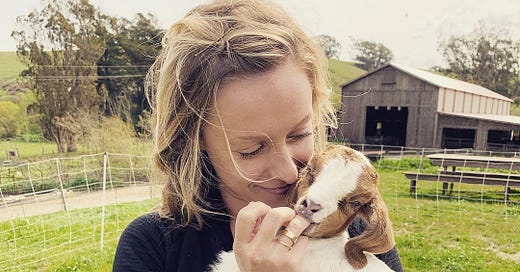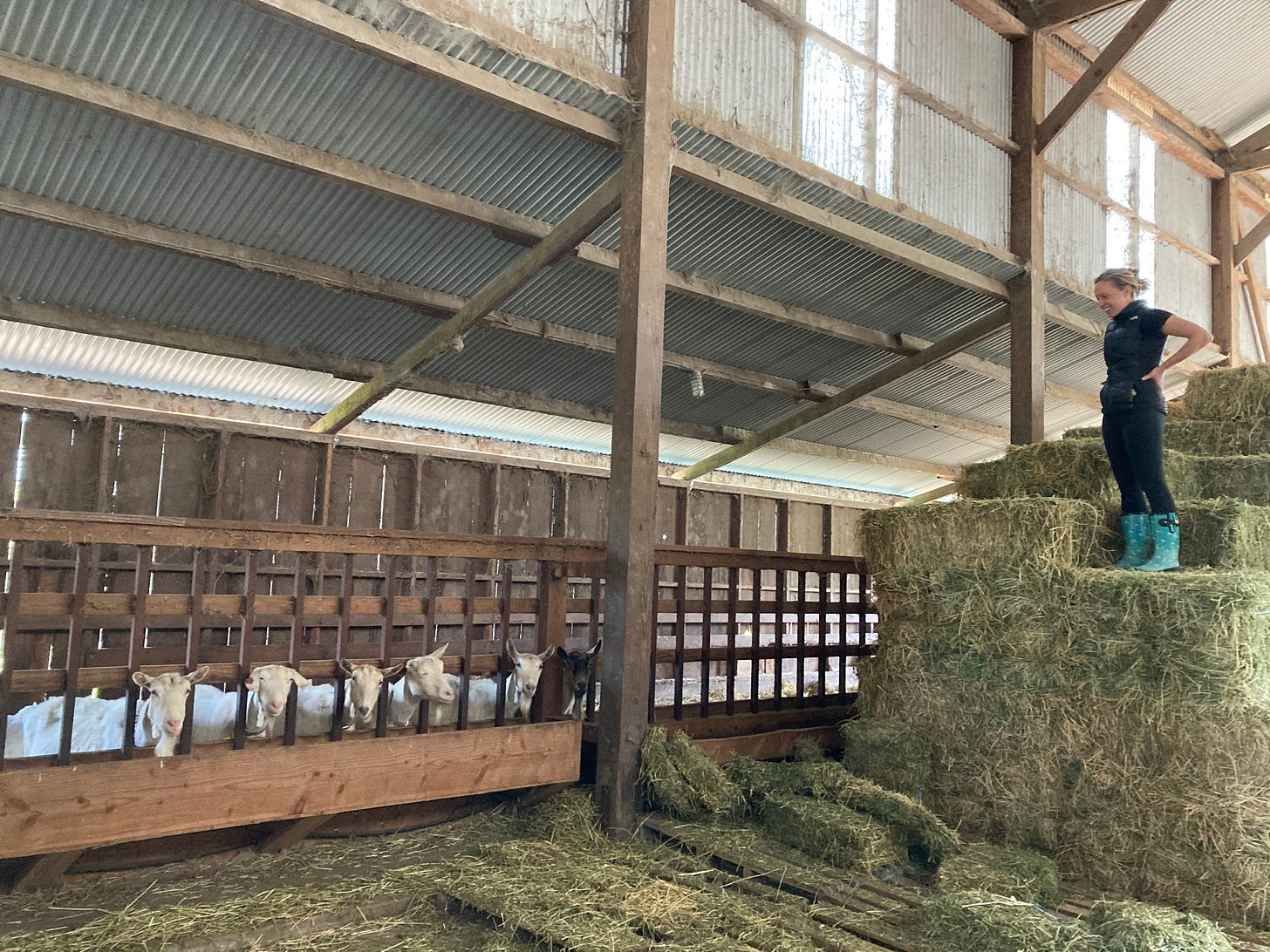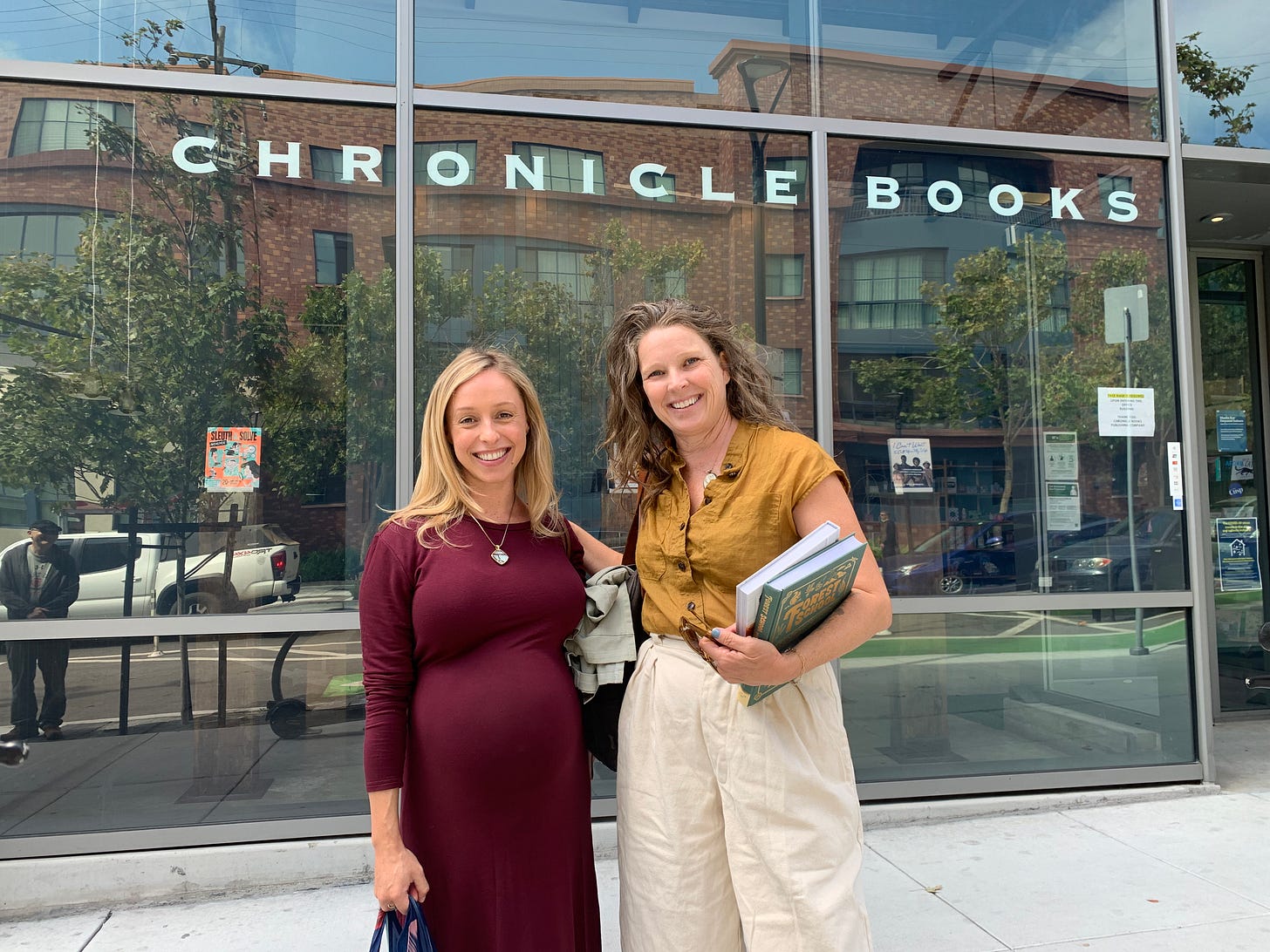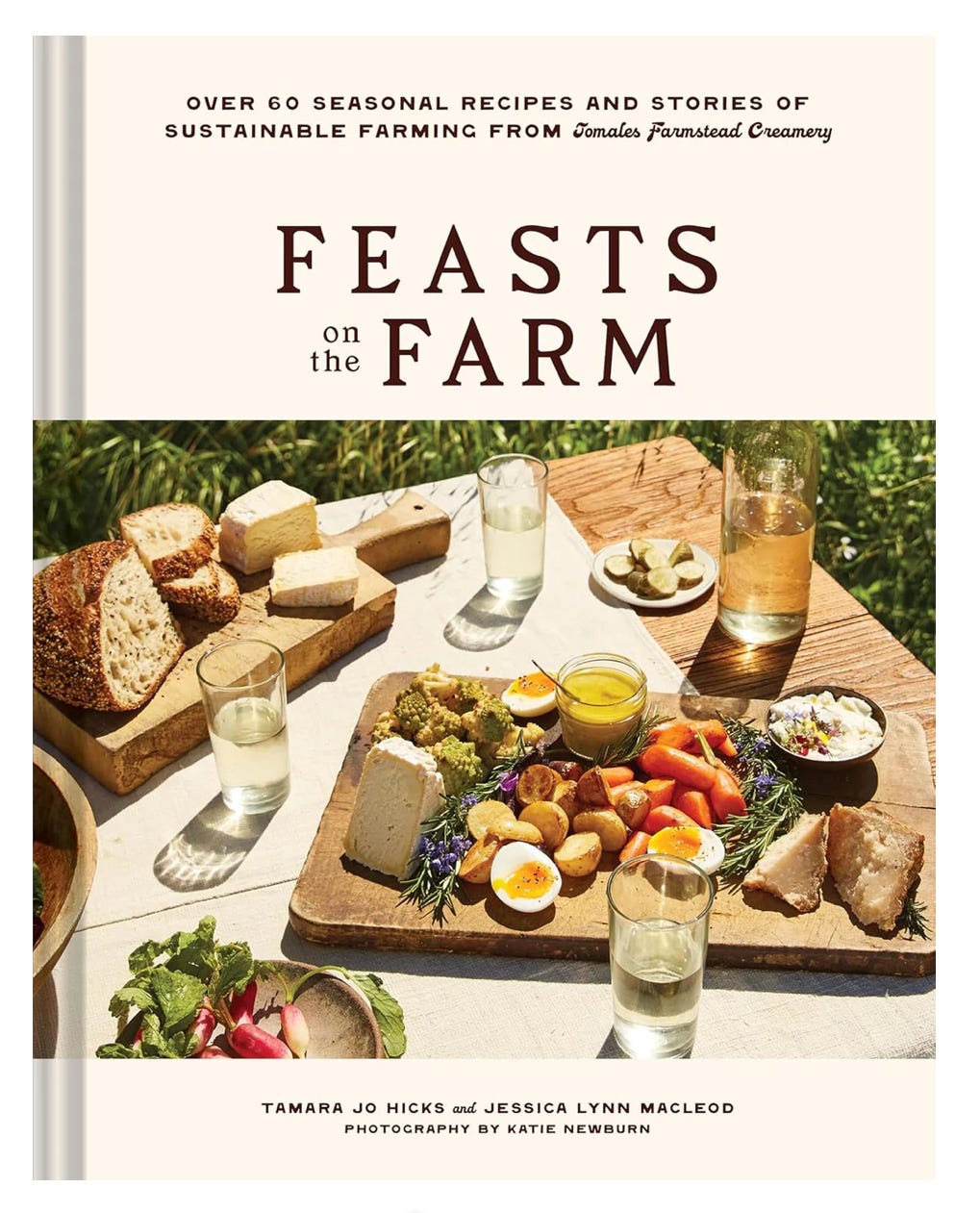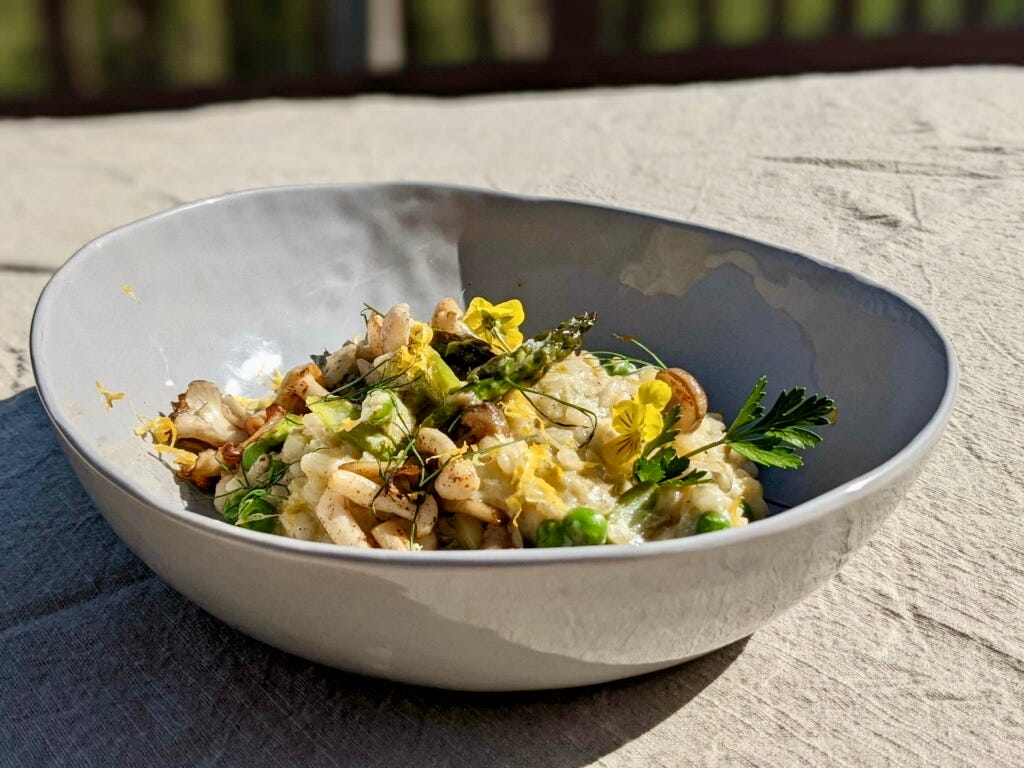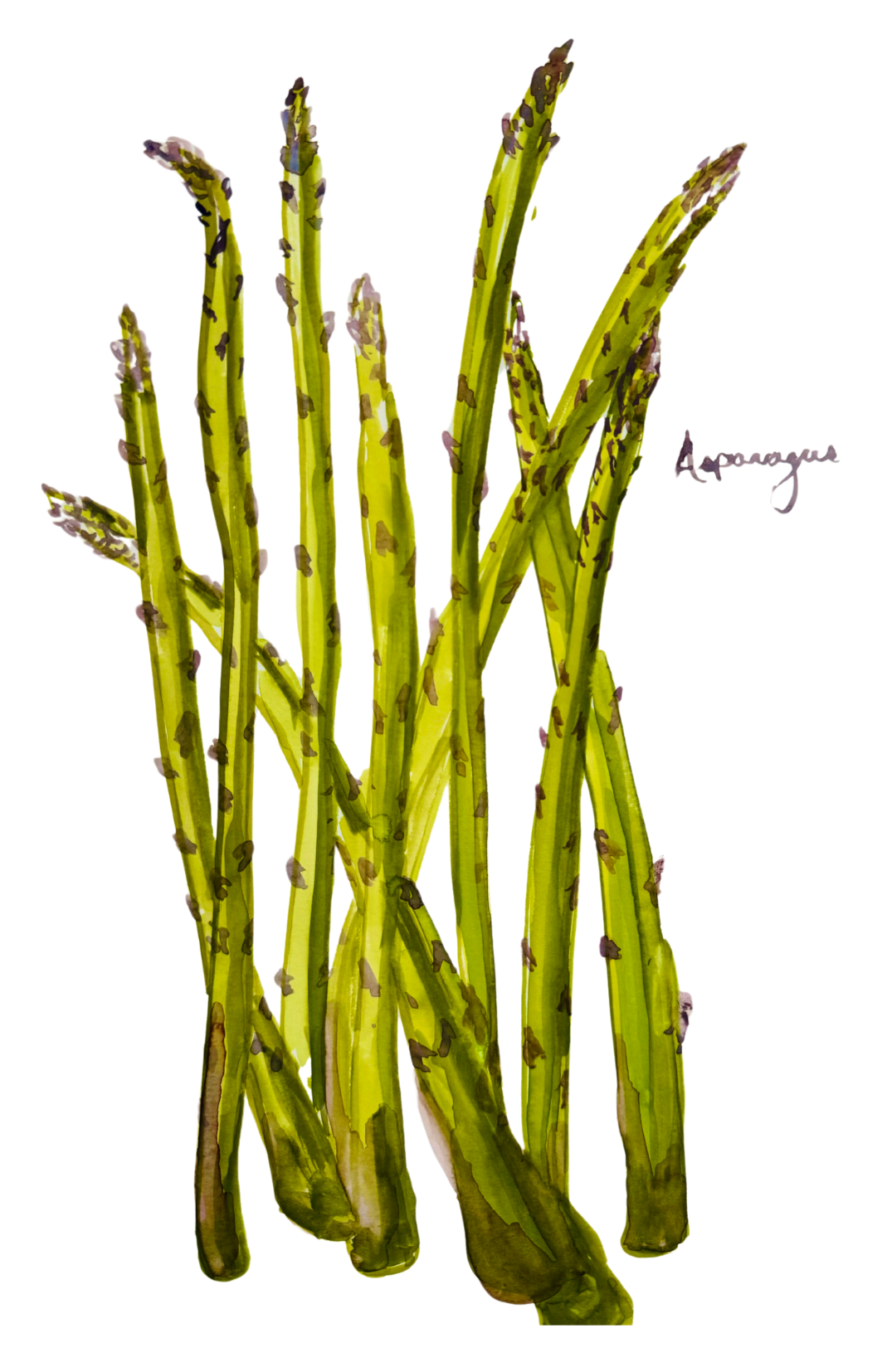Welcome to OOO: My seasonal round up of how I’m finding joy outside of work.
When you love what you do, it’s easy to let it take over. I know this firsthand. That’s why I’m introducing “OOO”—a new seasonal series that’s just as much a reminder for me as it is a share with you.
I hope this series serves as a nudge to protect the parts of life that don’t revolve around productivity. Because if we want to improve the way we work, we have to start by remembering how to not work. Harvard Business Review endorses this idea too: professionals who stay rooted in their identities outside of work are more creative, resilient, and grounded leaders.
So, think of “OOO” as my way of modeling that. In this first edition: the joy of spring, a peek at a project I’ve been working on after hours, a seasonal recipe, some watercolor doodles, and a few leisure reads.
I hope it inspires you to log off, look up, and remember what lights you up beyond the inbox.
“In order for art to imitate life, you have to have a life… For me, art was imitating art because all I was doing was working.”
—Whitney Cummings
Feasts, Farms, and Following Joy
My Unexpected Journey to Becoming a Published Author
In the early days of the pandemic, my world shrank to a cozy, 400 sq ft apartment—two laptops, a couch, and the constant hum of uncertainty. My husband Doug and I were both working from home, just ten feet apart. I was deep in meaningful (and intense) work, helping launch US Digital Response to connect volunteer technologists with overwhelmed government agencies. It was urgent, emotional, and heavy in all the ways 2020 asked us to carry more than we ever thought we could.
Doug, knowing me better than anyone, looked at me one evening and said, “You need to find something you love outside of work.”
He reminded me that I come alive when I’m in nature, around animals, and in the kitchen. So I sent an email to Toluma Farms, a goat farm and creamery in West Marin I had always admired. I offered to help with their website, thinking I might do something useful from behind a screen.
Instead, Tamara Hicks—the co-owner—invited me to help care for their baby goats.
It was unexpected and completely perfect.
I started showing up to the farm regularly, working in the barn for hours, bottle-feeding the newborn goats, spreading bales of hay, and always leaving covered in straw and carrying an armful of fresh cheese on my way home. The drive through the West Marin hills became its own kind of meditation—rolling landscapes, golden light, farm stands with overflowing fresh produce and flowers. I had stumbled into a version of life I didn’t even know I needed.
At home, that energy carried into my kitchen. I started creating new recipes, cooking with whatever I’d picked up on the drive home. I painted watercolors of the ingredients and started writing them into a little family cookbook. Friends and family would flip through and sign the pages next to the dishes we shared. I didn’t think of it as anything more than a creative outlet. But something was quietly blooming.
Eventually, I worked up the courage to ask Tamara if she had ever considered creating a Toluma Farms cookbook. Her whole face lit up. She said yes right away—and had stories she’d been waiting to tell: stories of transforming a conventional cow dairy into a sustainable goat and sheep creamery, of bringing healthy food back to the local food shed, restoring the land and mentoring the next generation of regenerative farmers. And of course, the story of her family and the meals cooked with the farmstead cheese.
Ten days before my daughter was born, we signed a book deal with Chronicle Books.
That book—Feasts on the Farm—comes out this August. It’s filled with over 60 of my recipes, a handful of guest contributions from beloved Bay Area chefs, essays about the land and the animals, and the kind of stories you’d hear if you sat down with Tamara over a wedge of cheese and a glass of wine. And delightfully, it’s graced with a foreword by the one and only Alice Waters.
The process taught me so much: how to write a book, how to care for goats, how to cook in a whole new way. But more than anything, it taught me how to follow joy. To explore something new without needing to be good at it. To stay open to where curiosity can lead you.
It’s not always easy to say yes to being a beginner, especially when it takes you far from the identity you've built for yourself. But this journey showed me that the things that feel good—the quiet nudges, the “what ifs,” the hay-covered detours—often carry us straight into something extraordinary.
Feasts on the Farm is available for pre-order now, including signed copies from our favorite local bookseller, Omnivore Books in San Francisco. We’ll be doing a launch event there in August, and will be sharing more book tour dates later this Summer. I would love to see you there!
In the meantime, you can follow me on Instagram for some behind the scenes peeks at the making of the book as well as the latest happenings at Toluma Farms and where you can find their incredible cheese.
Seasonal Recipe: Spring Vegetable Risotto
Yield: 6 servings
Ingredients
5 cups (1183 ml) chicken stock, preferably homemade
3 Tbsp (45 ml) olive oil
3 Tbsp (40 grams) salted butter
1 leek, well-rinsed, white and light green parts only, chopped (about 2 tablespoons)
½ cup (118 ml) dry vermouth
2 cups (370 grams) of Arborio rice
1 fennel bulb, chopped (fronds reserved for garnish)
Kosher salt
1 small bunch of thin, fresh asparagus (15 to 20 stalks), cut into 1-inch (2.5 cm) pieces
6 baby artichoke hearts, quartered
3 cups (552 grams) fresh wild mushrooms, coarsely chopped
½ cup (93 grams) fresh or frozen peas
1 lemon, zested and juiced
¼ cup (57 grams) Kenne or soft ripened goat cheese
½ cup (93 grams) grated Atika, pecorino, or parmesan
¼ cup (71 grams) Liwa or fresh chevre
2 to 3 sprigs flat leaf parsley
Instructions
Drizzle of olive oil and additional cheese for serving
In a small saucepan, bring the chicken stock to a gentle simmer.
In a large stock pot over low heat, warm the olive oil and 2 Tbsp (28 g) of butter until lightly shimmering. Add the leek and sauté until translucent.
Add the rice and stir to coat in the oil and leek mixture. Cook until it smells lightly toasted. Add the vermouth and use the sizzling liquid to scrape the bottom of the pan and loosen any sticky bits.
Add one ladleful of chicken stock at a time, stirring between additions. Begin preparing your vegetables while the liquid slowly absorbs. Continue ladling in the stock and adjust the heat to keep it at a low simmer until all but 1 cup (237 mls) of the stock is absorbed.
Add the fennel and a pinch of salt. Stir and continue adding stock slowly until the fennel is tender.
Gently stir the asparagus into the risotto.
Chop into roughly one-inch dice and add to risotto. Add remaining stock and place the lid on while you cook the mushrooms.
In a medium sauté pan over medium-high heat, sauté the mushrooms in the remaining tablespoon of butter and a pinch of salt until reduced in size, aromatic, and tender. Remove from the heat and stir into the risotto.
Once all remaining chicken stock has been absorbed, stir in peas, lemon zest and lemon juice.
Stir in cheese, taste, and add salt and pepper as desired. Garnish with flat leaf parsley and edible flowers.
Serve in shallow bowls with a drizzle of good olive oil and additional cheese on top.
This recipe is from my forthcoming book Feasts On The Farm.
What I’m reading (that isn’t related to work).
Practice of the Wild by Gary Snyder
A beautiful collection of essays from 1970-1990 by naturalist, poet, and personal hero of mine, Gary Snyder. It quickly transports me into the backcountry of the California high sierra and reminds all of us that it’s not enough to advocate for the environment - but you have to fall in love with the beauty of the earth, and reconnect with the parts of you that are wild nature.
If you’re not familiar with Monty Don, he’s the presenter and producer of the popular British series, Gardner’s World. If you’re interested in gardening, he’s a wealth of knowledge and in addition to tending to the ambling gardens of his own massive estate near the border of Wales, he travels the world learning about gardens and sharing his wisdom. This book is a love letter to all of the flora and fauna that make a garden magical as each season changes.
Thinking In Watercolor: A Daily Practice to Unlock Your Creativity & Discover Your Inner Artist
Watercolors are relatively new to me, but were my chosen medium for the illustrations I did for Feasts On The Farm. This book provides such interesting exercises and techniques to experiment with as I continue exploring the world of watercolors.
Feel Free Magazine by Leanne Ford
When I stumbled upon the first issue of Feel Free Magazine, I fell in love. This is a very artistic and carefully crafted periodical that is all about leaning into the freedom to explore creativity in all forms. It’s led by one of my favorite interior designers Leanne Ford and features artists, sculptors, architects, basket weavers, and more. If you’re looking for permission to be creative, Feel Free!


